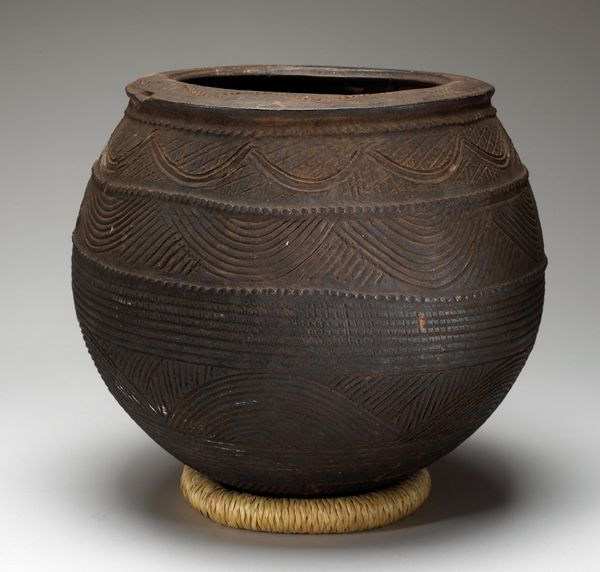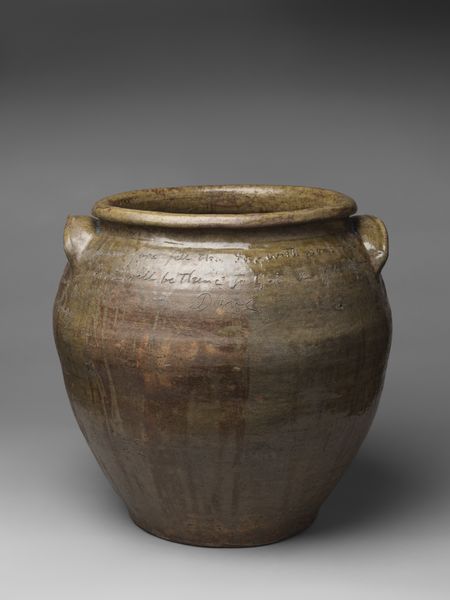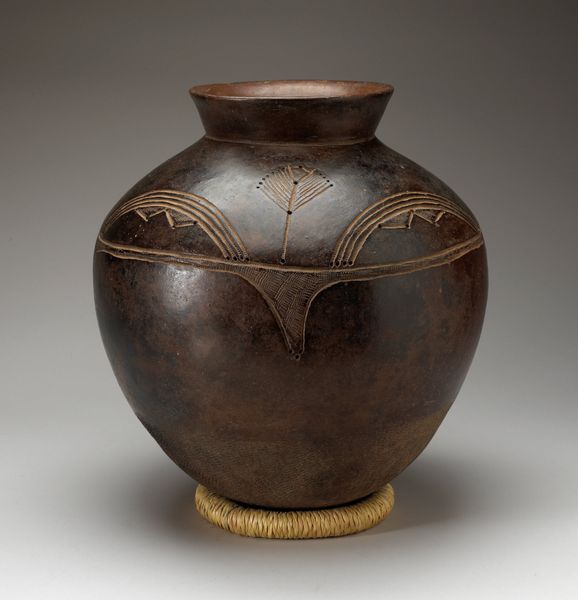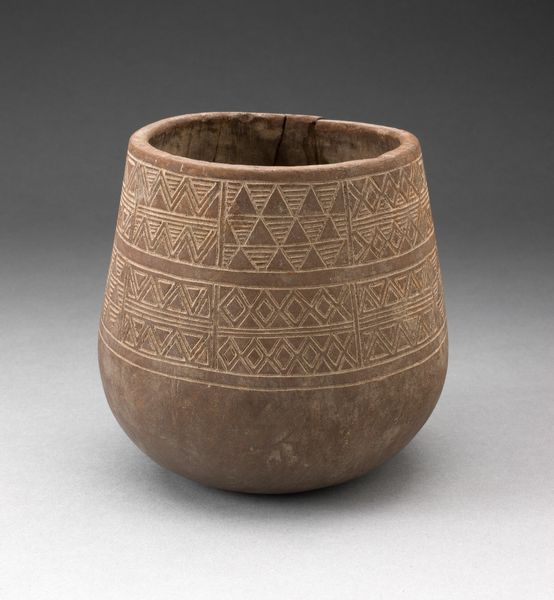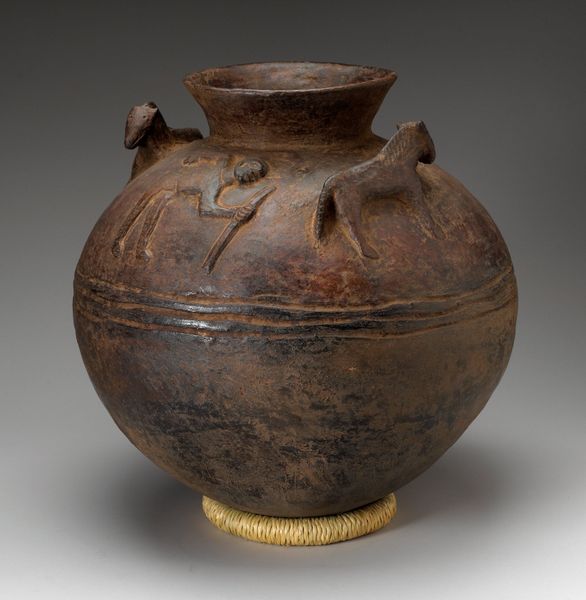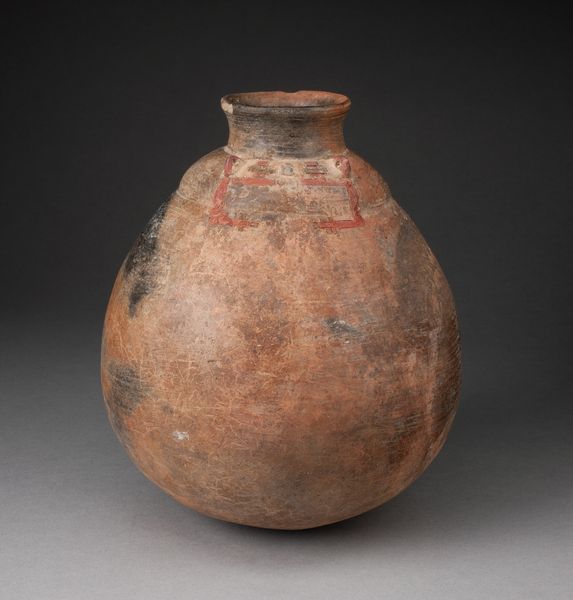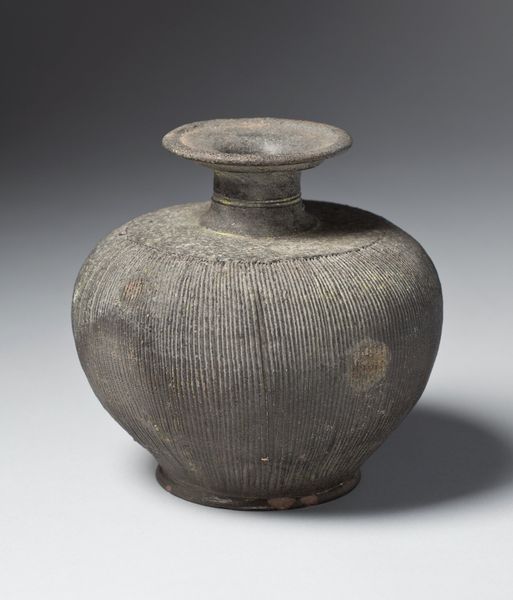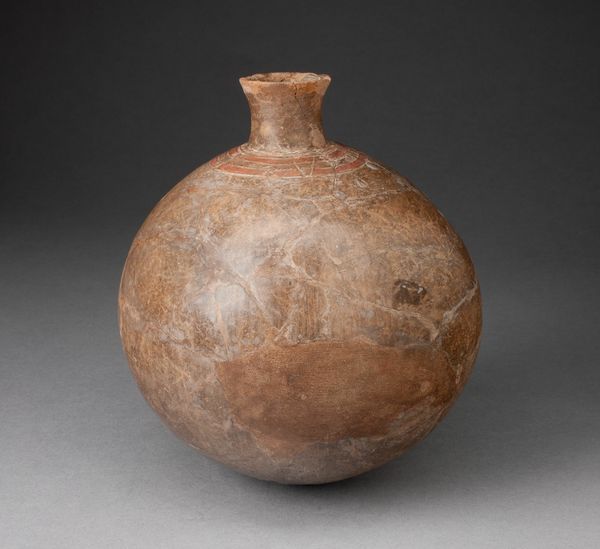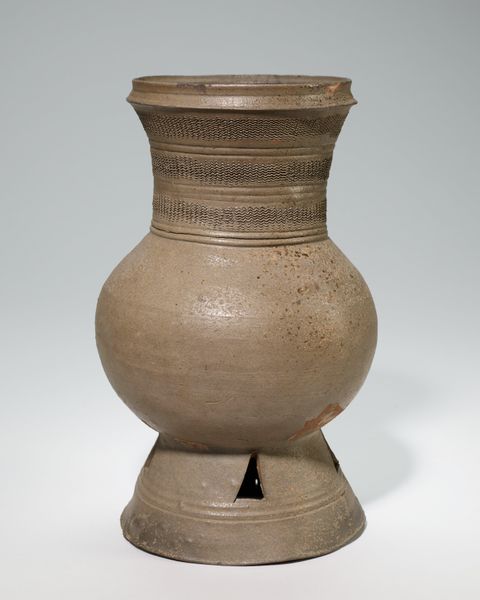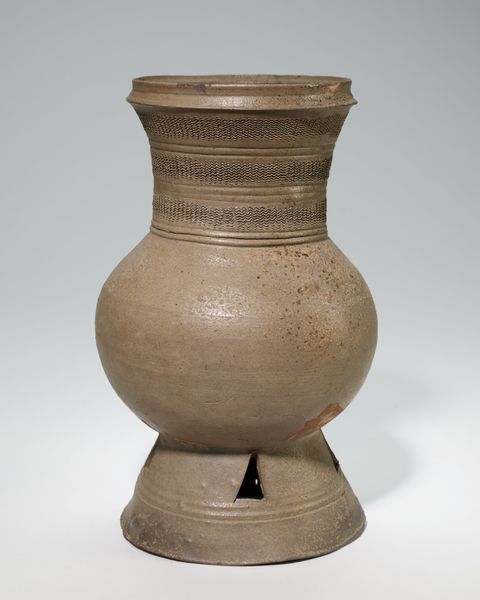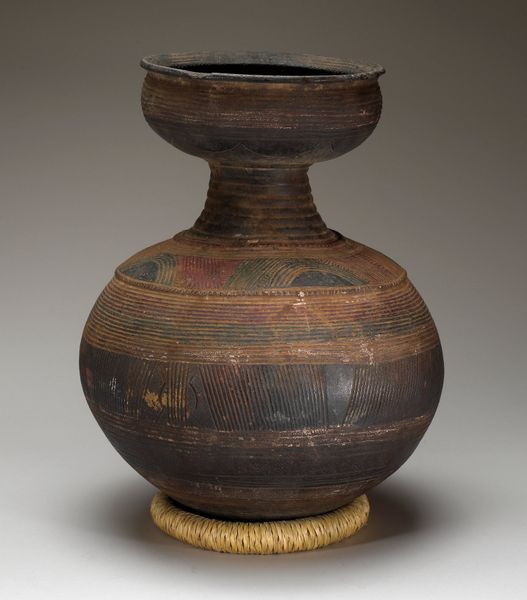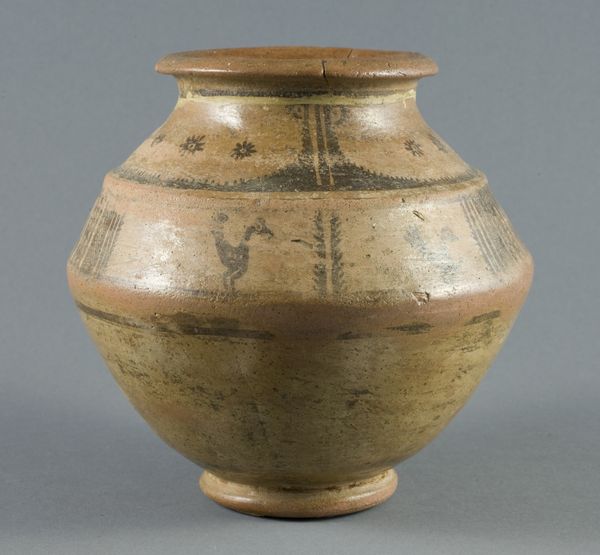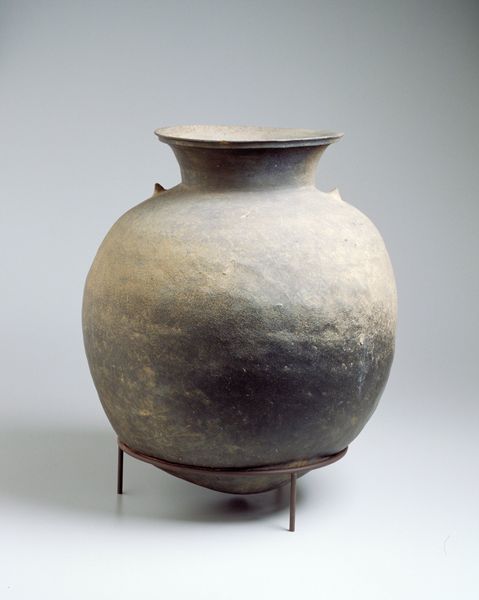
Large Karamono-Style Flower Basket (Hanakago) 1870s - 1880s
0:00
0:00
ceramic, wood
#
asian-art
#
ceramic
#
japan
#
ceramic
#
24_meiji-period-1868-1912
#
wood
Dimensions: H. 19 3/4 in. (50.2 cm); Diam. 16 in. (40.6 cm)
Copyright: Public Domain
Curator: Well, this has an air of ancient wisdom about it. Editor: It does, doesn't it? We're looking at a Large Karamono-Style Flower Basket, crafted sometime in the 1870s or 1880s, placing it in the Meiji Period. Its attributed to Hayakawa Shōkosai I. It's quite striking how these simple materials are turned into such a complex form. Curator: "Striking" is one word; "humble" comes to mind for me. It’s like a quiet giant standing there. Almost a visual poem about the cycle of life, decay, and rebirth. Editor: What interests me is the sheer labor involved. The materials, of course, are wood and ceramic; simple, readily available materials. But the artistry lies in the transformation – the meticulous weaving that elevates this functional object into a decorative one. Consider the socio-economic context: during the Meiji period, there was a revival of interest in traditional crafts. The elite wanted these items. Curator: Yes! You feel that history in its texture, that striving to reconnect with older forms, with the past… Like it is almost a longing for some simpler truth that material culture keeps alive. Editor: Absolutely, and the interesting contrast it embodies. We often talk about "high art" versus "craft," but this piece really blurs that line. Was it commissioned? How was Shōkosai I perceived at the time? It would be great to uncover the details of the manufacturing and distribution chains! Curator: The asymmetry is charming. And how the light catches those tiny flaws in the weaving. A bit like catching your own reflection in rough water... it reminds us that perfection isn’t everything, that there’s beauty in imperfection too. I suppose, the flowers displayed would bring this beauty out? Editor: I suppose so, it might explain why it found its way to The Met! So much to unpack. From a materialist perspective, it’s about understanding the means of production, the labor involved, and the cultural values attached to these objects during their time. Thanks for helping me delve into this beautiful artwork. Curator: And thank you for prompting a different sort of reflection about craft and spirit. These hushed objects hold such vibrant tales.
Comments
No comments
Be the first to comment and join the conversation on the ultimate creative platform.
